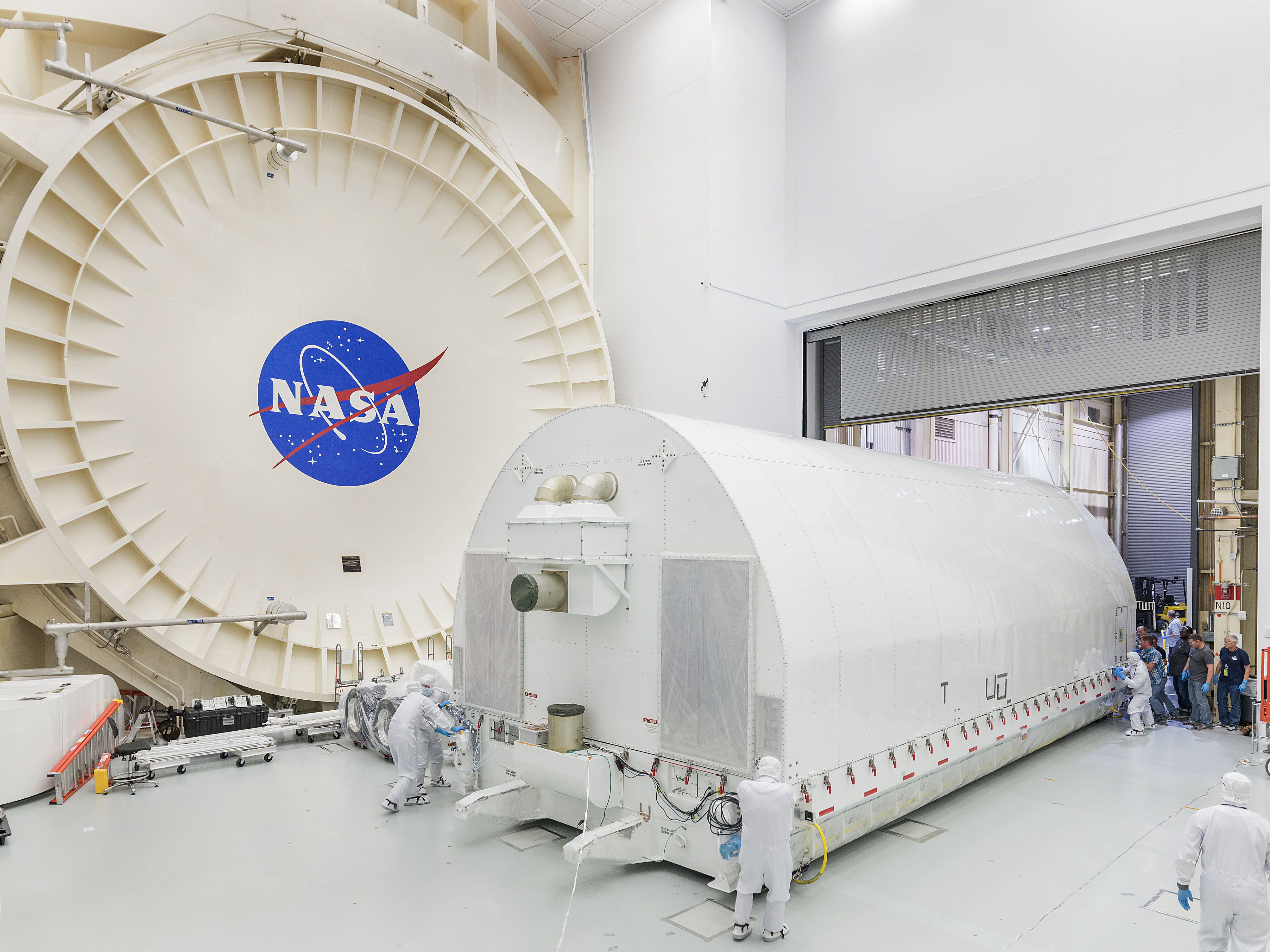James Webb Space Telescope Is Set for 100-Day Big Freeze

The James Webb Space Telescope is ready for a nearly 100-day stay in the freezer.
The megatelescope arrived at NASA's Johnson Space Center in Houston yesterday (May 7), where it will undergo one last cryogenic test to make sure it can function in the intense cold of deep space. The telescope — which is a joint project among NASA, the European Space Agency and the Canadian Space Agency — is set to launch in 2018.
Webb recently finished testing at NASA's Goddard Space Flight Center in Maryland, where engineers made sure its components could withstand the violent vibrations and harsh conditions of launch and spaceflight. [In Photos: Building the James Webb Space Telescope]
The telescope will spend almost 100 days in Johnson Space Center's Chamber A, an enormous vacuum chamber that was upgraded in 2013 after serving as the test bed for the Apollo modules destined for the moon. This final cryogenic test will confirm that the telescope's entire optical system can function in a region 1 million miles (1.6 million kilometers) from Earth, NASA officials said in a statement.
Then, the telescope will continue its journey to Northrop Grumman Aerospace Systems, in California, the project's primary contractor, for final assembly and testing. There, it will also integrate its spacecraft bus, which will house and protect the telescope during launch, and its sunshield, which will protect it from the sun's and Earth's infrared radiation as it probes distant star systems and galaxies. The sunshield will unfurl to the size of a tennis court once the telescope reaches its destination and unfolds to its full size.
Webb is the more powerful successor to the Hubble Space Telescope, and when it launches in 2018, it will be the world's largest space telescope. Each of its mirrors is individually tunable from afar, so any errors in focus will not necessitate a trip to space to install a physical corrective lens, like Hubble needed.
Email Sarah Lewin at slewin@space.com or follow her @SarahExplains. Follow us @Spacedotcom, Facebook and Google+. Original article on Space.com .
Get the Space.com Newsletter
Breaking space news, the latest updates on rocket launches, skywatching events and more!
Join our Space Forums to keep talking space on the latest missions, night sky and more! And if you have a news tip, correction or comment, let us know at: community@space.com.

Sarah Lewin started writing for Space.com in June of 2015 as a Staff Writer and became Associate Editor in 2019 . Her work has been featured by Scientific American, IEEE Spectrum, Quanta Magazine, Wired, The Scientist, Science Friday and WGBH's Inside NOVA. Sarah has an MA from NYU's Science, Health and Environmental Reporting Program and an AB in mathematics from Brown University. When not writing, reading or thinking about space, Sarah enjoys musical theatre and mathematical papercraft. She is currently Assistant News Editor at Scientific American. You can follow her on Twitter @SarahExplains.
